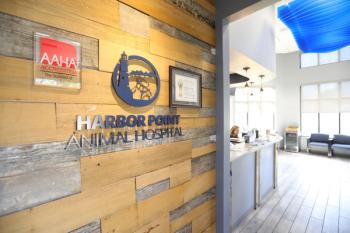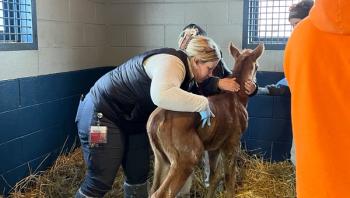
The year ahead: Are we headed for another recession?
Take a look at economic indicators so your veterinary practice is prepared.
Getty Images
If we know that a business cycle exists, why is there one?
I have asked this question for more than three decades and rarely get an answer. The U.S. economy's alternating periods of expansion and contraction have occurred throughout its history and will likely continue into the foreseeable future.
In the summer of 2015, the economy began to send out mixed signals on its position in the business cycle. During that period, some events responsible for the growth in our gross domestic product (GDP) showed considerable weakness, while other events appeared strong.
Why does this cycle of increasing and then declining GDP growth occur?
The business cycle is measured by gross domestic product (GDP), the value of all goods and services produced in the United States. The cycle is essentially caused by the difference between the production of goods and services and the consumption of those same goods and services. When production exceeds consumption, inventories begin to accumulate, sending a signal to producers to cut back on production.
Reduced production is usually achieved by reducing workers' hours. As a result, their incomes decline and consumption drops below production, which in turn stimulates another round of reduction in workers' hours. Eventually, production is reduced until it is less than consumption and inventories begin to decline. At that point, workers' hours are increased and consumption once again exceeds production-which stimulates growth.
Some believe that the last recession was set off by the housing bubble, but this is not the case. The housing bubble was burst by the decline in economic growth. As short-term adjustable rate mortgages came due, many loan holders could not afford to pay down the loans. Some of the delinquency was due to the already cooling economy, while others defaulted on their loans because they received mortgages that were beyond their means to pay after the short-term period of the loan expired.
As a result of the contraction phase of the business cycle and the crash of the mortgage market, GDP declined sharply and has yet to return to the long-term growth trend. Since the start of the last recession in December of 2007, the economy has lost roughly $7.1 trillion in gross output. The Congressional Budget Office (CBO) has forecasted that this gap between actual and potential GDP will close by 2018 (see Table 1).
How can you determine where the economy is in the cycle?
The CBO projection does not include any estimate of when the business cycle may turn downward, and thus its projection of GDP is not helpful to businesses trying to make decisions that reflect the potential of a pending recession. For that projection, we can turn to the Conference Board and its leading economic index (LEI). Table 2 illustrates both the LEI and the coincident economic index (CEI) from January 1999 to September 2015.
The LEI is like the windshield of a car, designed to show what's ahead, while the CEI is like the side window, designed to show what's occurring now. The gray bars indicate the recession periods when the economy contracted. The dates at the top indicate the month and year at the beginning and end of the recession. Note that the LEI turned downward months before either recession actually occurred. The LEI thus provides an advance warning of an economic downturn.
Currently the LEI appears to be climbing, but this appearance is misleading. From June to August the LEI was flat, showing no increase, while from August to September the LEI declined. And GDP growth fell from 3.9 percent in the second quarter of 2015 to 1.5 percent in the third quarter.
Whether or not the last three months of LEI values is a harbinger of conditions to come, the economy has been in a growth period since 2012. This steady improvement sets expectations of growing demand and increased levels of output to ensure that supply can keep pace with growing demand. As a result of slower growth in output around the world, the U.S. economy's expansion has also softened. If U.S. production has overshot consumption during this period, the beginning of a new economic contraction period is likely. How quickly that contraction becomes a recession will depend on how far production overshoots consumption. From the data available at the time of this writing, I would suggest that the next recession could begin as early as eight months from now to as far away as 20 months from now.
What can you do to take advantage of the cycle?
The longest economic expansion period in the last seven decades was 120 months and the shortest was 12 months, with a mean length of 61 months. The current expansion has lasted 78 months. Using the recessionary target range, the expansion could last 86 to 98 months before the next recession. Knowing that, what strategies might be implemented to reduce financial hardships among veterinary practices?
First, create a reserve account to help ensure that you can cover any negative cash flow. Take a look at your cash flow from 2008 to 2011 to get an idea of what that amount was and accumulate a fund equal to the total negative cash flow that occurred during that period.
Second, forego capital purchases. The best time to purchase large capital items is during a contraction when manufacturers are struggling to eliminate inventory and builders find it difficult to maintain full-time employment for their crews.
Finally, cull inventory of pharmaceuticals and consumables and eliminiate underutilized equipment. Attempt to reduce fixed costs while adding value to services. It's not necessary to reduce fees during a recession if clients see greater value for the same costs.
The index of leading indicators is found on the Conference Board's website (conference-board.org) and is typically posted on the third Thursday each month. By learning how to interpret this index, you'll have access to the U.S. economy's early warning signals and be able to plan accordingly.
Interestingly, if enough people made financial decisions using this index, there would be no business cycle. But history shows us that is unlikely, and that's why there continues to be one.
Dr. Mike Dicks, director of the AVMA's Veterinary Economics Division, holds a doctorate in agricultural economics from the University of Missouri. He has worked in Africa on water delivery and energy production technologies and has served with the USDA's Economic Research Service.
Newsletter
From exam room tips to practice management insights, get trusted veterinary news delivered straight to your inbox—subscribe to dvm360.






